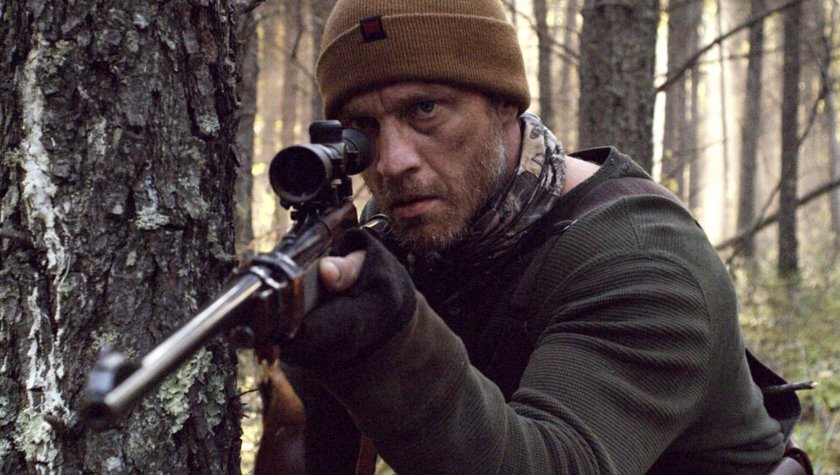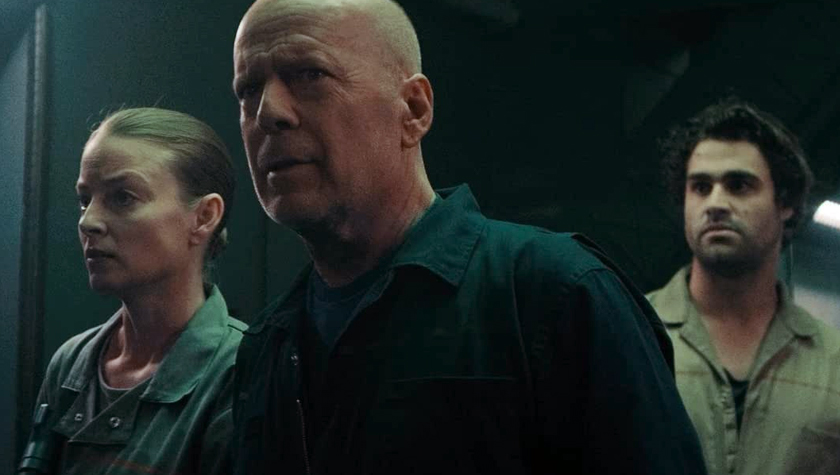Talking Suspense and Stakes in Braden R. Duemmler's 'What Lies Below'
December 16, 2020
In writer-director Braden R. Duemmler’s debut feature sci-fi/horror What Lies Below, we are whisked into the suspense when 16-year-old Liberty (Ema Horvath) returns home from camp and learns that her mother Michelle (Mena Suvari) has a new boyfriend who may not be exactly what he appears to be.
At its core, What Lies Below is a movie about unconscious fear; specifically in this film, the fear of abandonment.
“When Michelle loves, she latches on. She’s all-encompassing and she doesn’t want to let go. That insecurity is what perpetuates the narrative; her flaw is where you find her voice,” said Duemmler, who had a muse who inspired him to create the character of Michelle.
Duemmler, who said he grew up with a morbid fear of death (that has morphed into an obsession with death), consistently keeps his characters in situations with life-or-death stakes.
“Stakes make people care and the one thing I like to add to this genre is empathy.”
And with success: The complicated rift between Michelle and Liberty over John (Trey Tucker) creates a push-pull dynamic that keeps the story’s pace tight and emotions high.
On working in the sci-fi/horror genre, Duemmler said, “You have to hide the mechanism and still make the film function with just the tease.”
The tease is turned on in What Lies Below; its cinematography and visual effects — especially playing with visual effects in nature — whet a viewer’s appetite to learn more about the mysterious John through the eyes of the suspicious Liberty, who is willing to lose a relationship with her mother if just to show her the true identity of her partner.
The well-structured What Lies Below may be thanks to Duemmler’s experience in production, having graduated from the USC School of Cinematic Arts and his background in film theory from the University of Vermont. Duemmler said his academic experience has been an incredibly valuable tool in his filmmaking.
“I got exposed to so many different films, different countries of filmmaking, different movements of filmmaking," he said.
"I learned a language and all the tools you need in a director’s tool kit; my foundation in film theory is so fundamental to who I am as a filmmaker, and my production side taught me how to pull off the ideas that I have.”
Though he cites his production experience in multiple filmmaking facets as being crucial to his development as a director, from a story-development perspective Duemmler said low-budget features are now what the short film was.
"I was learning how to make movies in shorts. I’ve developed a process now that I don’t know if I would apply to shorts; there’s so much outlining and research involved. Short films were how I learned to write scenes and moments," he said.
The final act of What Lies Below is a culmination of the skills Duemmler has developed: writing and directing the film’s scenes and moments to build to a very powerful — and potentially sequel-creating — ending sequence.
On filmmaking in general, Duemmler has advice for up-and-coming writers: Find your network; those you consider friends and collaborators.
“If you have a good group; you believe in each other, you support each other, you give great notes ... once one of you gets going, you’re all going to get going," he said.
"My filmmaker network is a tight-knit group; just find and focus on that group, just as much as you focus on trying to branch out from it.”
Written by: Vanessa King
Vanessa King is an NYC-based producer, screenwriter, and professor who has worked in development with top-level industry talent for nearly two decades. Her work as a writer has received numerous awards, having earned her recognition from industry bodies including AMPAS/Oscar’s Nicholl Screenwriting Fellowship (feature) and Sony Worldwide Entertainment’s Emerging Filmmaker Program (TV Series). In 2005, she co-founded the New York Screenwriters Co-Op, New York’s only free-to-the-public screenwriting workshop with over 2000 active members. Vanessa is faculty at Gotham Writer’s Workshop (NYC) and Staffordshire University (UK), where she teaches both television and screenwriting to students, beginner to post-graduate. She recently was Showrunner of the TV pilot “Two Roads”, a concept she co-created and co-wrote for Sony’s VUE Network. Vanessa is passionate about diversity and inclusion within the industry and was a consultant on Final Draft Screenwriting Software’s Diversity and Inclusion product build. She’s a board member of the Diversity List, amplifying top scripts written by female-identifying and BIPOC writers. She is a judge for the Hip Hop Film Festival, The UCLA Graduate Screenwriter’s Showcase and The 24 Hour Film Festival. She was named one of The Huffington Post’s 13 Women To Watch and for three consecutive years, has been named to Vanity Fair’s “Downtown 100”, a list that recognizing New York’s top networkers in the entertainment industry. Originally from Canada, she lives in New York City.



